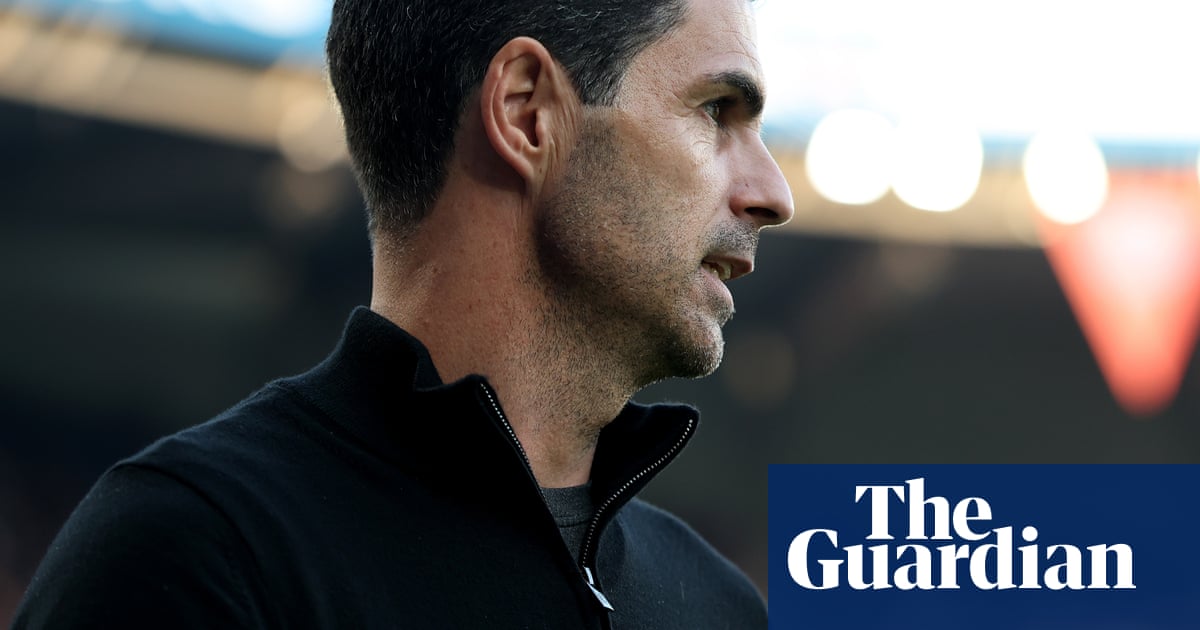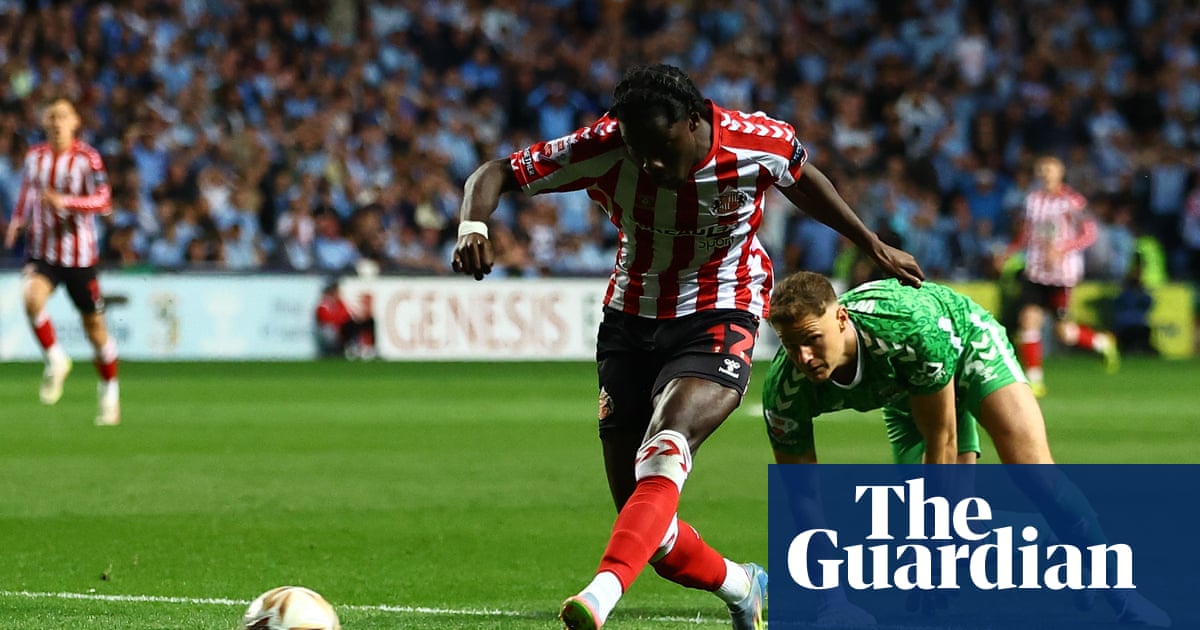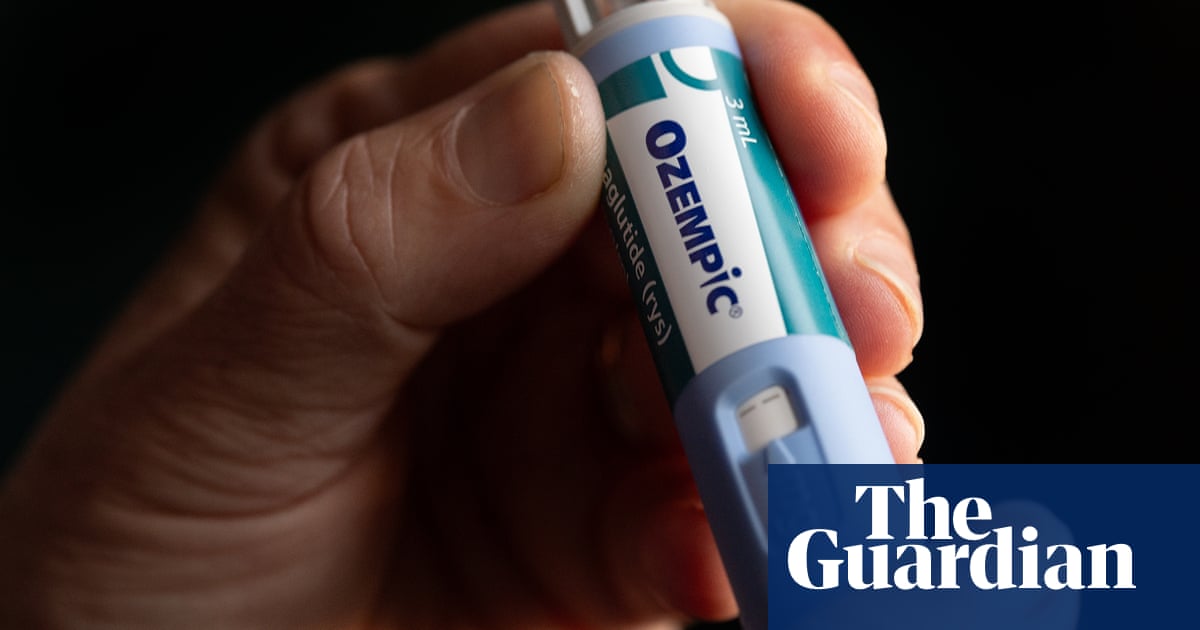Need an Android phone, but not sure which to go for, or whether to buy new or refurbished? With lots to consider, view me as your guide as you trek through the process of picking the best handset for you.
The latest flagship Android phones come in various sizes, at different prices, and with varying hardware and software features, all powered by the fastest chips. Whether your priority is battery life, camera, screen size, software support or value for money, there is more to choose from than ever. But if you’re thinking of buying Apple instead, we have a guide for iPhones, too.
At a glance
-
Best Android for most people:
Google Pixel 9
£621.96 at Amazon -
Best Android for camera:
Google Pixel 9 Pro
From £999 at Carphone Warehouse -
Best Android for battery life and big screen:
Samsung Galaxy S25 Ultra
From £1,099 at Samsung -
Best small Android:
Samsung Galaxy S25
From £699 at Samsung -
Best value Android:
Google Pixel 9a
£499 at John Lewis
Replace or spruce up?
New models typically have faster chips and better cameras, but the differences between generations are shrinking with each year. That means the best Android phone might be the one already in your hand.
If your battery doesn’t last as long as it used to, replacements are often available from the manufacturer or third parties, and start at about £50, depending on the make and model. If your Android is slow or apps won’t install, check you have enough free storage – ideally at least 2GB. Space can be freed up by uninstalling unused apps or content, clearing out your messaging storage, off-loading photos and videos to the cloud and deleting music and podcasts you no longer listen to.
When to replace your Android
If your phone is worn out, broken beyond repair or no longer receives crucial security updates, it’s time to upgrade. Most older Androids received only three years of software support from release date – not from purchase – with newer, better models getting five to seven years. Replacing a phone that has stopped receiving security updates is essential because it will be more vulnerable to hackers and cybercriminals.
The best Android phones in 2025
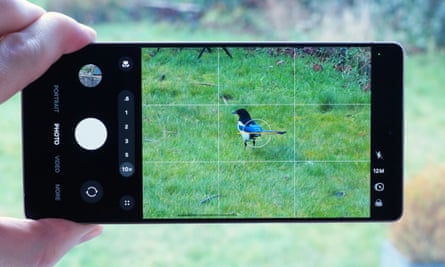
Best Android for most people:
Google Pixel 9
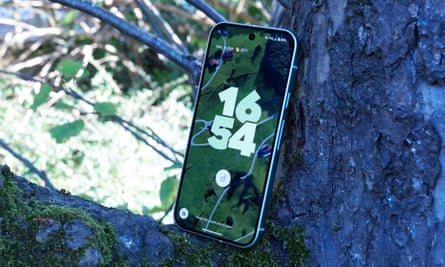
£749 at John Lewis
£621.96 at Amazon
It’s not the biggest or equipped with the most cameras, but the Google Pixel 9 strikes a great balance between design, price, size, features and camera quality.
The device has a modern, premium look, IP68 water resistance and Google’s standout camera design on the back. A sharp and sufficiently sized 6.3in OLED screen makes content look great, and its 120Hz refresh rate keeps scrolling smooth. Unlocking the phone is easy, with the fast and reliable ultrasonic fingerprint scanner under the display and improved 2D face unlock that uses the selfie camera.
The Pixel 9 has 12GB of RAM and the same top Tensor G4 chip as Google’s most expensive models, remaining snappy and responsive. The battery lasts about two days between charges with light use or at least a day of navigating, photos and media. It comes with a decent 128GB of storage, and a 256GB model is available if you need more.
The phone runs some of the best software and will get the latest and therefore most secure versions of Android faster than its rivals, thanks to monthly updates until at least August 2031.
Most of Google’s AI features come as standard on the Pixel 9. That includes free access to the impressive Gemini Live assistant, the handy Pixel Screenshots app, and various writing and summarisation tools. It also has advanced AI image editing in Google Photos, and the popular Best Take and Add Me group-shot camera features.
The dual rear camera is among the best in the business, making the most of shots with little effort. Super closeups are a breeze for its microphotography mode, and there’s 2x magnification on the main sensor. But the Pixel 9 lacks a real telephoto lens, which is its biggest downside – along with the price creeping up from previous versions.
Why should you buy it?
The Pixel 9 is the sweet spot for eye-catching design, premium build, performance, AI features and longevity – plus it costs less than other models with more cameras or bigger screens.
Buy if: you want the premium, AI-packed Android experience with top-tier speed and features
Don’t buy if: you want the best camera zoom or a massive screen
Read our full Google Pixel 9 review: a good phone overshadowed by great ones
Screen: 6.3in 120Hz FHD+ OLED (422ppi)
Processor: Google Tensor G4
RAM: 12GB
Storage: 128 or 256GB
Tested battery life (with overnight standby): 50 hours
Camera: 50MP, 48MP ultrawide, 10.5MP selfie
Water resistance: IP68 (1.5m for 30 minutes)
Dimensions: 152.8 x 72 x 8.5mm
Weight: 198g
Best Android for camera:
Google Pixel 9 Pro
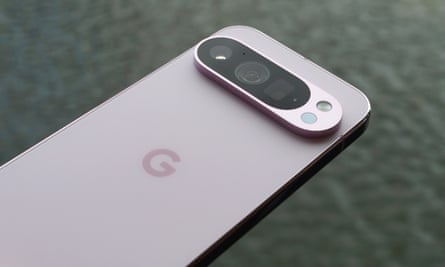
From £999 at Carphone Warehouse
From £1,099 at John Lewis
The Pixel 9 Pro takes everything good about Google’s regular Pixel 9 and adds a class-leading 5x telephoto camera to the back.
The 6.3in OLED screen is slightly brighter than its cheaper sibling, rivalling the very best in the business. The frosted glass back and polished aluminium sides look and feel expensive, while the fingerprint and face scanners work great. The Tensor G4 chip is backed by a plentiful 16GB of RAM, keeping things smooth and enabling the latest AI tools, all while maintaining a solid two-day battery life.
The excellent main and ultrawide cameras from the Pixel 9 are joined by one of the best 5x telephoto cameras on the market, which has an in-sensor zoom for an effective 10x optical magnification. The Pixel 9 Pro makes getting the shot across various lighting conditions and environments easier than any other, plus it has plenty of useful AI tools to boot and – weirdly – a thermometer on the back.
Long software support until at least August 2031, access to all of Google’s most advanced local and cloud-based AI features, and its manageable size make the Pixel 9 Pro very hard to beat.
Why should you buy it?
The Pixel 9 Pro has one of the very best cameras on any phone, wrapped in a relatively compact frame with top performance, AI features and longevity.
Buy if: you want the best camera on a phone that’s not giant
Don’t buy if: you want a massive screen or super-long battery life
Read our full Pixel 9 Pro review: a real contender for the best small phone
Screen: 6.3in 120Hz QHD+ OLED (495ppi)
Processor: Google Tensor G4
RAM: 16GB
Storage: 128, 256 or 512GB
Tested battery life (with overnight standby): 50 hours
Camera: 50MP, 48MP ultrawide, 48MP 5x telephoto, 42MP selfie
Water resistance: IP68 (1.5m for 30 minutes)
Dimensions: 152.8 x 72 x 8.5mm
Weight: 199g
Best Android for battery life and a big screen:
Samsung Galaxy S25 Ultra

From £1,099 at Samsung
From £1,099 at Carphone Warehouse
If money is no object and you want the biggest and best screen on an Android with some of the longest battery life available, the Samsung Galaxy S25 Ultra lives up to its name.
The huge 6.9in screen is the brightest and best around, wrapped in a titanium frame with tiny bezels. Four cameras on the back rival the Pixel 9 Pro for the best, including 3x and 5x telephoto cameras. Inside, it has the fastest Android chip available, 12GB of RAM and at least 256GB of storage, while its two-day-plus battery life helps it go the distance.
The S25 Ultra has great software with support until 2032, so you can keep using it for longer with proper care. The phone is packed with loads of the most advanced AI tools, which are still a bit hit and miss, plus a stylus for handwriting and doodling on the screen.
Despite being thin and not too heavy, the S25 Ultra is super-sized, which means it requires two hands to use most of the time and might be a struggle to fit in pockets. It also launched at an eye-watering price, which has come down a little but still tops most competitors. Look out on the refurbished market or for deals.
Why should you buy it?
The S25 Ultra is the reigning superphone champ with the best screen, the fastest chip, very long battery life and more cameras on the back than any other, plus plenty of AI features and even an integrated stylus.
Buy if: you want the superphone with the best screen, long battery life and all the extras
Don’t buy if: you don’t want a huge phone at a high cost
Read our full Samsung Galaxy S25 Ultra review: still the superphone to beat
Screen: 6.9in 120Hz QHD+ OLED (500ppi)
Processor: Qualcomm Snapdragon 8 Elite for Galaxy
RAM: 12GB
Storage: 256, 512GB or 1TB
Tested battery life (with overnight standby): 58 hours
Camera: 200MP, 50MP 0.6x, 10MP 3x, 50MP 5x, 12MP selfie
Water resistance: IP68 (1.5m for 30 minutes)
Dimensions: 162.8 x 77.6 x 8.2mm
Weight: 218g
Best small Android:
Samsung Galaxy S25
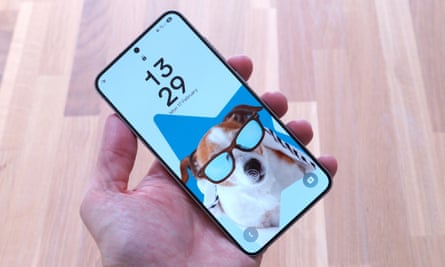
From £699 at Samsung
From £759 at Argos
A truly small flagship Android doesn’t exist, but Samsung’s regular Galaxy S25 is the most manageable you can get.
It has a great and relatively small 6.2in screen, slim bezels and flat aluminium sides, and it weighs only 162g, making it feel nice and compact. Despite being much cheaper, the regular S25 has the same super-quick chip as its much larger S25 Ultra sibling, plus plenty of RAM and at least 128GB of storage. A decent triple camera, including a 3x telephoto zoom, is on the back.
The S25 also runs the same good Android version as the rest of Samsung’s top phones, including loads of AI tools and support until 2032, so you’re not missing out just because it’s smaller.
The only downside of the more compact size is a smaller battery. It will still last a solid day, but not much more. You can also find better cameras on slightly larger rivals.
Why should you buy it?
The S25 is the last great Android flagship at this size, and it doesn’t skimp on features despite its compact and lightweight frame.
Buy if: you want a smaller flagship phone
Don’t buy if: you need very long battery life or a big screen
Read our full Samsung Galaxy S25 review: the smallest top-tier Android left
Screen: 6.2in 120Hz FHD+ OLED (416ppi)
Processor: Qualcomm Snapdragon 8 Elite for Galaxy
RAM: 12GB
Storage: 128, 256 or 512GB
Tested battery life (with overnight standby): 37 hours
Camera: 50MP, 12MP 0.6x, 10MP 3x, 12MP selfie
Water resistance: IP68 (1.5m for 30 minutes)
Dimensions: 146.9 x 70.5 x 7.2mm
Weight: 162g
Best value Android:
Google Pixel 9a
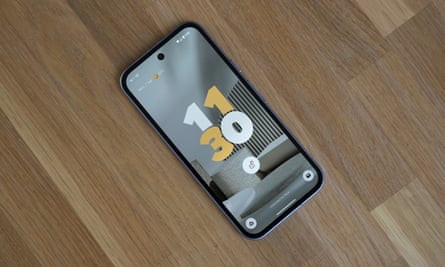
£499 at John Lewis
From £499 at Ao
Google’s latest A-series Pixel is the best yet, squeezing almost everything great about the Android-maker’s high-end phones down to a mid-range price.
It looks like a clone of the regular Pixel 9 from the front, with a good 6.3in screen and aluminium sides. But the Pixel 9a has a dual-camera system that sits almost flush with the high-quality plastic back. It’s sleek, although it looks a bit generic compared with Google’s previous standout camera designs. It still feels good and has full IP68 water resistance, plus an optical fingerprint scanner and face unlock.
The 9a has the same Tensor G4 chip as the regular Pixel 9, keeping it snappy in operation, while the battery lasts a good two days between charges. It only has 8GB of RAM, which isn’t particularly noticeable in day-to-day use but does curb some of Google’s more advanced AI tools. The 9a still has great software, including Gemini, which will be supported for a full seven years from release – almost unheard of at this price.
The best part is the camera. While it only has a main camera and an ultrawide one on the back, it shoots better photos than many phones twice the price. In fact, it’s only a smidgen behind the regular Pixel 9 in low light. The 9a even has Google’s popular Best Take and Add Me AI features, plus full access to Magic editor and other tools.
A few corners have been cut, including the plastic back rather than glass, an older generation of scratch-resistant glass on the screen, and the lack of support for Android’s built-in spatial audio system for headphones.
Why should you buy it?
The Pixel 9a offers a top-tier experience but at a much cheaper, mid-range price, making it the best value flagship Android by a mile.
Buy if: you want an excellent Android with flagship experience and a great camera for less
Don’t buy if: you want a telephoto camera
Read our full Pixel 9a review: Google’s cut-price Android winner
Screen: 6.3in 120Hz FHD+ OLED (422ppi)
Processor: Google Tensor G4
RAM: 8GB
Storage: 128 or 256GB
Tested battery life (with overnight standby): 57 hours
Camera: 48MP, 13MP ultrawide, 13MP selfie
Water resistance: IP68 (1.5m for 30 minutes)
Dimensions: 154.7 x 73.3 x 8.9mm
Weight: 186g
after newsletter promotion
The best of the rest

Best book-style foldable phone:
Google Pixel 9 Pro Fold
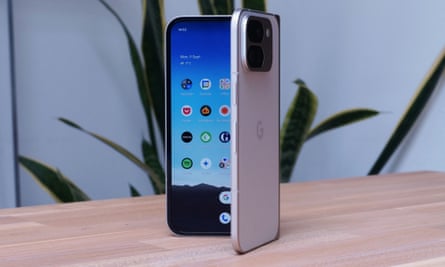
£1,749 at John Lewis
From £1,749 at Amazon
Book-style foldables squeeze a tablet and a regular phone screen into one pocketable device. They come in various shapes and sizes, but the Pixel 9 Pro Fold marries the two forms better than others.
When closed, its 6.3in outside screen feels like a normal phone – if slightly heavier – for messaging, calls and anything you might do with the standard Pixel 9. Open it like a book to reveal the high-quality 8in tablet screen ready for big-screen browsing, media consumption and multitasking.
The 9 Pro Fold has Google’s top Tensor G4 chip, at least 256GB of storage and up to two days of battery life with light use, or one with heavy use. It has five cameras, including a selfie camera in each screen and a 48MP main, 10.5MP ultrawide and 10.8MP 5x telephoto camera on the back. Those are the best you’ll find on a foldable, even if they’re not quite as good as the regular Pixel 9 Pro. Smart features – such as Made You Look, which attracts kids’ attention to the camera with animated characters on the screen – only add to the experience.
The phone has the same software as the regular Pixel 9 Pro, the latest Android version with updates until August 2031 and all of Google’s cutting-edge AI features. You can run only two apps side by side for multitasking, but the software is simpler to navigate than more powerful rivals.
The 9 Pro Fold is heavier and more fragile than a regular phone, with a softer internal screen material and a crease down its centre that allows it to fold. It’s water- but not dust-resistant, so keeping it clean will be crucial. And it comes at a high cost, with expensive repairs for any accidents, so insurance may be wise.
Why should you buy it?
The Pixel 9 Pro Fold is a regular phone when closed and a quality small tablet when open, putting two devices in your pocket with fewer compromises than rivals.
Buy if: you want the best combination of form and function in a book-style foldable
Don’t buy if: you want the most powerful multitasking software
Read our full Google Pixel 9 Pro Fold review: the ideal foldable phone design
Outside screen: 6.3in 120Hz FHD+ OLED (422ppi)
Inside screen: 8in 120Hz OLED (373ppi)
Processor: Google Tensor G4
RAM: 16GB
Storage: 256 or 512GB
Tested battery life (with overnight standby): 40 hours
Camera: 48MP, 10.5MP ultrawide, 10.8MP 5x, 2x 10MP selfie
Water resistance: IPX8 (1.5m for 30 minutes)
Dimensions folded: 155.2 x 77.1 x 10.5mm
Dimensions unfolded: 155.2 x 150.2 x 5.1mm
Weight: 257g
Alternative:
Samsung Galaxy Z Fold6

From £1,799 at Samsung
£1,329 at Amazon
Samsung invented the book-style foldable phone with the original Galaxy Fold in 2019, and it still makes one of the best on the market with the Galaxy Z Fold6. This Android has a narrower closed form than Google’s folder, which makes it more cramped when using it as a phone, particularly when typing. It’s also thicker, though lighter, when folded.
The cameras aren’t quite as good as its Google counterparts, but Samsung’s powerful One UI Android software allows it to run up to eight apps on screen at once. It can also be connected to an external monitor, keyboard and mouse to be used as an Android desktop computer.
The Fold6 has many AI features, including Google’s Circle to Search and Gemini assistant, and will receive updates until at least July 2031. It’s water resistant, but shares the same downsides of weight, fragility and expense as the Pixel 9 Pro Fold.
Read our full Samsung Galaxy Z Fold6 review: the best folder going is only minor upgrade
Outside screen: 6.3in 120Hz FHD+ OLED (410ppi)
Inside screen: 7.6in 120Hz QXGA+ OLED (374ppi) 7.6in
Processor: Qualcomm Snapdragon 8 Gen 3
RAM: 12GB
Storage: 256, 512GB or 1TB
Tested battery life (with overnight standby): 48 hours
Camera: 50MP, 12MP ultrawide, 10MP 3x, 10MP and 4MP selfie
Water resistance: IP48 (1.5m for 30 minutes)
Dimensions folded: 153.5 x 68.1 x 12.1mm
Dimensions unfolded: 153.5 x 132.6 x 5.6mm
Weight: 239g
Best flip-style foldable phone:
Samsung Galaxy Z Flip6
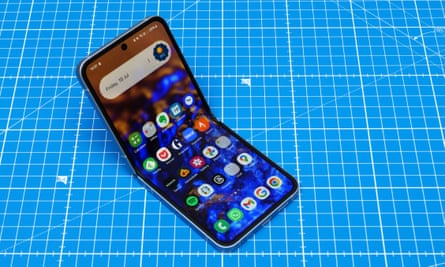
From £1,049 at Tesco Mobile
£1,049 at John Lewis
Flip phones take a big screen and fold it in half for a more pocketable package.
Samsung’s Z Flip6 is the best on the market, offering a quality clamshell design and a fairly large outside screen, as well as dual cameras that allow tricks such as shooting selfies on the main cameras. The cameras aren’t quite as good as those on Samsung’s regular Galaxy S25, though, lacking a telephoto lens. And the outside screen is more limited in capability than some rivals unless you install extra tools. Its cool factor makes it a bit more interesting than a dull slab phone, though.
The Flip6 has 2024’s top Android chip and a solid battery life of about two days with light use or at least a full day with heavier use. The phone’s many AI features include Google’s Circle to Search and Gemini assistant, and it will receive software updates until at least July 2031.
Like other folding devices, it’s water- but not dust-resistant and more fragile than a regular phone – I’d recommend careful handling and accidental damage insurance.
Why should you buy it?
The Galaxy Z Flip6 puts a big screen in a cool, compact folding clamshell design that works better than its rivals.
Buy if: you want a big screen in something pocketable and interesting
Don’t buy if: you’re rough with your phone or want the best camera
Read our full Samsung Galaxy Z Flip6 review: faster, longer-lasting flip phone
Outside screen: 3.4in 60Hz OLED (306ppi)
Inside screen: 6.7in 120Hz FHD+ OLED (425ppi)
Processor: Qualcomm Snapdragon 8 Gen 3
RAM: 12GB
Storage: 256 or 512GB
Tested battery life (with overnight standby): 48 hours
Camera: 50MP, 12MP ultrawide, 10MP selfie
Water resistance: IP48 (1.5m for 30 minutes)
Dimensions folded: 85.1 x 71.9 x 14.9mm
Dimensions unfolded: 165.1 x 71.9 x 6.9mm
Weight: 187g
Other Androids to consider

OnePlus 13: great hardware, good camera, a rapid experience and long battery life, but let down by short software support and lack of quality AI tools.
OnePlus 13R: a solid handset that feels rapid and well made at a competitive price, but has older chips and short software support.
Samsung Galaxy S25+: the middle of Samsung’s flagship pack is good, but it’s bettered at either end by its siblings and costs more than rivals. Look for deals.
Samsung Galaxy S24 Ultra: last year’s best superphone is still worth buying on a deal or refurbished in 2025, thanks to its long software support.
Google Pixel 9 Pro XL: a larger version of the excellent Pixel 9 Pro is only bettered by the S25 Ultra for big-screen fans, so it’s worth a look if you’re not tempted by the Samsung.
Google Pixel 8 Pro: last year’s top Pixel was great, with updates until at least October 2030, making it worth looking at on a deal or refurbished.
Buying a refurbished Android phone
Buying refurbished is better for the planet and your wallet than buying new, but Android phones are typically limited in their useful life by a lack of software updates rather than the hardware wearing out. That means the newer the phone from release, the better the buy.
Broadly, there are two types of refurbished Android: those that manufacturers, such as Samsung, refurb and sell almost as new and those refurbished by third parties that come in various grades or conditions (see our guide below).
Do not buy:
-
any model older than 24-36 months old because you’ll get only a few years of software support before you’ll have to replace it. Older Android phones get less than five years of support from when they were first released, not when you bought them.
-
any phone without access to the Google Play Store and Google’s services, which are needed for most mainstream apps in the UK.
A buyer’s guide to refurbished phones
ShowSeveral third-party retailers offer refurbished phones, including the UK high street chains CeX and Game and online stores such as musicMagpie and Envirofone. Marketplaces like Amazon and eBay and refurb specialist Back Market also have a wide range. And some phone operators, including O2, giffgaff, EE and Vodafone, sell refurbished iPhones.
The condition of the phone is among the most important things to consider before parting with any cash. This is graded as follows:
Grade A – virtually identical to a new phone on the outside, usually with the original box and accessories. These are often customer returns rather than trade-ins and are the most expensive.
Grade B – in full working order but typically with light scratches, dents or nicks, and may come with original accessories.
Grade C – in full working order but visibly worn and typically sold without original accessories.
Grade D – also known as “for spares and repairs” or similar. These are broken devices sold for people to fix or gut for parts.
Once you’re satisfied with the condition of the phone, be sure to also size up the device’s:
Battery health – batteries wear out, typically only maintaining up to 80% of their original capacity after 500 full-charge cycles (about two to three years of nightly charging). Has it been replaced?
Charging port – check for signs of damage, as these are among the first parts to break.
Buttons – do they all work without pressing too hard? Broken buttons make phones difficult to use and can be expensive to fix.
Fingerprint scanner – is the fingerprint reader functioning as it should? Scratches or repairs can cause them to be faulty.
Network locks – check the phone works with the provider of your choice, as some are originally sold locked to certain networks and must be unlocked before being used on another.
Unauthorised parts – not all repairs are done by the manufacturer or using certified parts, which can affect performance.
Check it isn’t stolen – check the phone’s 15-digit IMEI (International Mobile Equipment Identity) number against a database of stolen devices through a service such as CheckMEND or similar.
Warranty – what kind of warranty does the retailer offer on its refurbished phones?
How we picked
Flagship phones come at a premium, so you should expect the very best technology and performance throughout years of use. When I selected the phones to test, I considered:
Performance – a top-tier chip and snappy performance are essential to keep a phone fast throughout its useful life.
Software – should be up to date and come with a minimum of five years of Android updates from release, ideally longer.
Great displays – you should expect quality displays with high brightness for outdoor use, high pixel density to keep things crisp and high refresh rates to keep scrolling smooth.
Cameras – are the main battleground for the flagship phone manufacturers, so expect the best with multiple lenses and plenty of features.
Battery life – should stand up to hard use, at least lasting when used all day.
Build quality – top-tier phones are not cheap, so they should be made to last with high quality, ideally recycled materials, scratch-resistant glass and proper water resistance.
Sustainability – accidents happen and even the longest-lasting batteries do wear out, so phones should be repairable with real options for replacement batteries, screens and other parts.
How I tested
ShowWe combine real-world testing with various tools, such as benchmarking systems that perform standardised tasks. These help us evaluate a phone, measure its performance, confirm that it works as expected and compare it with its competition and predecessors.
We use the phones at different times and in various environments, from firing off emails on packed commuter trains to weekends spent shooting photos in national parks, and everything in between. We do everything a typical smartphone user would, such as messaging, browsing, using apps, listening to music, watching videos, playing games and navigating the real world. That gives us a good impression of how a smartphone handles the rigours of day-to-day life – plus, it shows us how long the battery lasts and the strength of its wireless performance.
The findings from our general use of the phones are combined with the results from specific tests for things such as the camera zoom, video playback and charging, to inform the reviews and help us rank the devices.
Why you should trust me
I’ve been reviewing consumer electronics for 17 years, with more than a decade spent as the Guardian’s gadget expert. In that time I’ve seen all manner of tech fads come and go, smartphone giants rise and fall, the cutting edge morph into the mainstream, and have poked, prodded and evaluated more than 1,000 devices – sometimes to destruction.
Samuel Gibbs is the Guardian’s consumer technology editor

.png) 11 hours ago
5
11 hours ago
5









